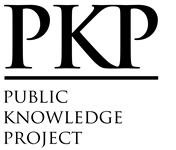Eye Care by Dutch Nursing Home Physicians: A Descriptive Study
Abstract
Currently, 4% of older adults reside in long-term care facilities in the Netherlands. Nursing home residents tend to have multimorbidity that is associated with considerable disabilities and a high level of care dependency. In the Dutch adult population the highest estimated prevalence (>40%) of visual impairment (low vision and blindness) was found in the subgroup of residents in nursing homes (NHs). The aim of this study is to describe the current practice of eye care by Dutch nursing home physicians (NHPs).
A digital online survey was developed to describe the eye care activities of nursing home physicians and their cooperation in this perspective with other professionals.
Of 1573 NHPs present in the Netherlands, 125 (8%) responded.
Results show that more than 50% of the NHPs regularly examine ‘distant vision’, ‘near vision’ and ‘the visual field’. However, 23%, 33% and 45% almost never or never examine the ‘visual field’, ‘near vision’ and ‘distant vision’, respectively. Data regarding eye care, regularly recorded in the client files by more than 50% of the NHPs, are medical data involving ‘use of eye medication’, ‘eye disease’, and ‘eye surgery in the past’. Less commonly recorded is ‘the use of reading glasses’ as well as ‘eye pain’.
Inside of the NH, (head) nurses and ward nurses (chi2 = 309, df = 5, p = 0.000), and outside of the NH, ophthalmologists and low vision specialists are most frequently contacted about eye related issues (chi2 = 224, df = 4, p = 0.000). Opticians are rarely contacted, and optometrists and orthoptists are ‘never’ contacted by more than 50% of the NHPs. Moreover, 50% of the NHPs noted that collaboration with external eye care professionals is ‘not structural’.
This study shows that, according to NHPs, relevant visual aspects are not structurally examined and recorded in the client files. Outside of the NH, NHPs tend to have a less frequent collaborative relationship with optometrists, orthoptists and opticians compared to ophthalmologists and low vision specialists. The NHP’s role in providing eye care can be improved by development of guidelines for structural eye screening, improvement of recording in client files, and exploring plus undertaking collaboration with other eye care professionals.
Full Text:
PDFDOI: https://doi.org/10.5296/jsss.v3i1.8502
Refbacks
- There are currently no refbacks.
Copyright (c) 2015 Marianne M. Sinoo, Jos M. G. A. Schols, Mirjam M. A. van Tilborg, Helianthe S. M. Kort

This work is licensed under a Creative Commons Attribution 4.0 International License.
Journal of Social Science Studies ISSN 2329-9150
Copyright © Macrothink Institute
To make sure that you can receive messages from us, please add the 'macrothink.org' domain to your e-mail 'safe list'. If you do not receive e-mail in your 'inbox', check your 'bulk mail' or 'junk mail' folders. If you have any questions, please contact: jsss@macrothink.org
-----------------------------------------------------------------------------
